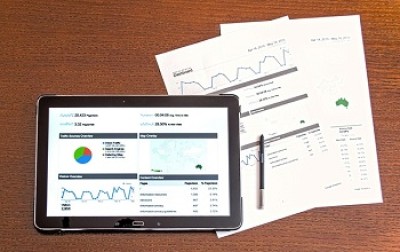
Are you tired of struggling to communicate your ideas to your development team? Do you wish you had a tool that could help you write functional specs quickly and efficiently? Look no further than Tomco AI! With our guided template for functional specs, you can turn your app or website ideas into reality in no time.
To get started, simply select the functional specs template from Tomco AI's library of 200+ templates. Then, follow the guided prompts to fill in the necessary details about your app or website, including its purpose, features, and user experience.
Before you begin writing your functional specs, it's important to identify your goals and users. What problem does your app or website solve? Who is your target audience? By answering these questions, you can ensure that your functional specs accurately reflect the needs and desires of your users.
Next, outline the features and functionality of your app or website. What will users be able to do? How will they navigate through your app or website? By providing a detailed overview of your app or website's functionality, you can ensure that your development team understands your vision.
In addition to outlining the features and functionality of your app or website, you'll also need to define your technical requirements. What programming languages and frameworks will your development team need to use? What hosting and storage solutions will be required? By defining your technical requirements, you can ensure that your development team has the resources they need to bring your app or website to life.
Testing is crucial to ensure that your app or website functions properly and meets the needs of your users. It's important to have a clear plan for testing and launching your app or website to ensure that it is successful in the long run.
First, outline your testing strategy. This includes the types of testing you plan to conduct, such as functional testing, performance testing, and usability testing. You should also describe the tools and techniques you will use to conduct the testing. For example, you may use automated testing tools to test the functionality of your app or website.
Next, outline your launch strategy. This includes how you plan to roll out your app or website to users, as well as how you will gather feedback from them. You may choose to launch your app or website in stages, starting with a small group of users before expanding to a wider audience. You should also describe the channels you will use to gather feedback, such as user surveys or social media.
It's important to also consider how you will address any bugs or issues that arise during testing or after launch. This includes how you will prioritize and address bugs, as well as how you will communicate with users about any issues that arise. You should also have a plan in place for maintaining and updating your app or website to ensure that it remains relevant and functional over time.
By outlining a clear testing and launch strategy in your functional specs, you can ensure that your development team has a clear understanding of your goals and vision for your app or website. This will help them to create a product that meets your needs and the needs of your users, and will increase the likelihood of a successful launch and long-term success.
Here's the sample screenshot and output of this template.
Headline:
Functional Specifications for DailyGratitude.io App
Intro Paragraph:
DailyGratitude.io is a website that aims to promote positivity and gratitude by allowing users to share daily statements of gratitude with their friends. The app offers both free and paid plans with varying levels of functionality. In this document, we will outline the functional specifications of the app to ensure that it meets the needs of its users.
User Registration:
- Users can sign up for the app using their email address or social media accounts.
- The registration process should be simple and straightforward, with clear instructions and prompts.
- Users should be able to choose between the free and paid plans during the registration process.
Gratitude Journal:
- The app should allow users to create and maintain a gratitude journal where they can write daily statements of gratitude.
- Users should be able to add photos and videos to their journal entries.
- The app should provide users with prompts and suggestions to help them come up with ideas for their daily gratitude statements.
Social Sharing:
- Users should be able to share their gratitude statements with their friends on social media platforms such as Facebook, Twitter, and Instagram.
- The app should provide users with the option to share their statements publicly or privately.
- The app should allow users to connect with other users who share similar interests or goals.
Notifications:
- The app should send users daily reminders to write their gratitude statements.
- Users should be able to customize the frequency and timing of these reminders.
- The app should also send users notifications when their friends share their gratitude statements.
Security:
- The app should use industry-standard encryption and security protocols to protect user data.
- Users should be able to control their privacy settings and choose who can see their gratitude statements.
- The app should have a system in place to detect and prevent fraudulent or malicious activity.
User Experience:
- The app should have a clean and intuitive user interface that is easy to navigate.
- The app should load quickly and be responsive to user input.
- The app should provide users with helpful feedback and guidance throughout the user journey.
Analytics:
- The app should track user engagement and behavior to help improve the user experience.
- The app should provide users with insights and analytics about their gratitude statements and journal entries.
- The app should use data analytics to identify trends and patterns in user behavior.
Language Support:
- The app should support multiple languages to cater to a global audience.
- Users should be able to switch between languages easily.
- The app should provide users with localized content and prompts.
Privacy Policy:
- The app should have a clear and concise privacy policy that outlines how user data is collected, stored, and used.
- The privacy policy should be easily accessible and understandable.
- The app should obtain user consent before collecting or using any personal data.
Technical Requirements:
- The app should be compatible with a wide range of devices and operating systems.
- The app should be optimized for mobile devices and have a responsive design.
- The app should be scalable and able to handle a large number of users and data.
Summary:
DailyGratitude.io is a website that allows users to share daily statements of gratitude with their friends. The app offers both free and paid plans with varying levels of functionality. The app should have a simple and straightforward registration process, allow users to create and maintain a gratitude journal, and provide social sharing options. The app should also have robust security measures, a clean and intuitive user interface, and support multiple languages. Finally, the app should have a clear and concise privacy policy and be compatible with a wide range of devices and operating systems.
Writing functional specs for your app or website can be a challenging task, but by following these tips and tricks, you can ensure that your functional specs are effective and communicate your vision clearly to your development team.
By following these tips and tricks, you can write effective functional specs for your app or website and ensure that your development team has the information they need to bring your vision to life.
With Tomco AI's guided template for functional specs, you can turn your app or website ideas into reality quickly and easily. By following our prompts and tips, you can ensure that your functional specs accurately reflect your vision and provide your development team with the information they need to bring your ideas to life.
Sign up takes 1 minute. Free trial for 7 days. Instant activation.

In recent years, the field of artificial intelligence has experienced a monumental leap forward in t...

Are you looking to master a new subject but struggling to find the right resources to help you learn...

Are you thinking about expanding your business into a new market? Before you make any big decisions,...